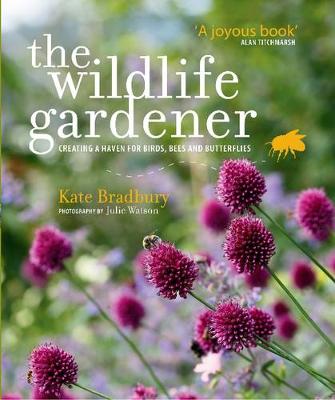Reviewed by annieb123 on
The wildlife gardener by Kate Bradbury, published by Pen and Sword, UK is filled with wonderful advice and tips and usable information to attract a wide variety of wildlife to our gardens. The book is filled with beautifully photographed wildlife from insects to mammals, birds, amphibians and reptiles.
The book begins with an impassioned and well reasoned introduction making the case for counterbalancing in some small way the loss of habitat and unchecked pesticide use which is devastating our natural environment and having such a terrible impact on our ecosystem. I've been a beekeeper and gardener for years and I've personally seen the effects in the dwindling numbers and varieties of insects and wildlife which I've experienced on my property. I have been moving toward a more natural setting in my own gardens and was looking for tips on expanding my own use of native food plants for more species. The advice included in this book is usable and not too intimidating for a casual gardener to implement. There are many small projects in the book which could easily be built in a short amount of time (several in a single weekend). Many of the projects are not invasive or costly and make a lot of sense, such as a shady rock or wood pile for habitat for insects, amphibians or small mammals, plans for building a shallow pool or a bug house for insects. The projects and coordinated planting suggestions take up roughly the first half of the book.
The second half of the book continues the theme with a lavishly photographed introduction to common types and species of wildlife including birds, mammals, amphibians & reptiles, insects, and butterflies and moths. Each entry has a description, including proper nomenclature for most of them, along with specific advice for 'How to attract them'. The species included are slanted toward mainland Great Britain, but there are many species which are common to a much larger range.
Roughly the last 25% of the book is a listing of appropriate plants which are valuable food or habitat resources for indigenous species. There are planting recommendations with explanations of why they're useful and for which species they provide food or shelter.
The author also makes a very good case for using native plants which aren't overly bred for extreme displays, but provide nectar and pollen which are usable and accessible.
At the end of the book is a troubleshooting guide on how to deal with injured or sick wildlife (call the experts) and a listing of potential occurrences for each season. The reference section is also full of links for further research and reading. It's slanted toward the UK, but includes resources which are also valuable for non-UK gardeners.
The book is quite short, at 120 pages, but packed full of usable, well written, beautifully photographed advice.
Highly recommended. Four stars.
Disclosure: I received an ARC at no cost from the author/publisher.
Reading updates
- Started reading
- 5 October, 2017: Finished reading
- 5 October, 2017: Reviewed
